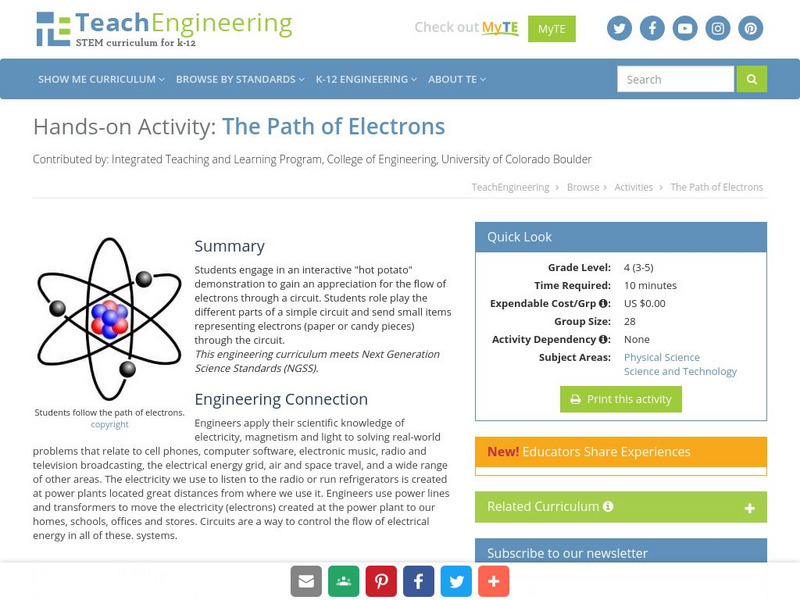Curated OER
How We See Things
Students investigate how mirrors reflect light. In this reflection lesson, students draw the path of the light reflected from a mirror. Students construct a list of objects that are light sources.
Curated OER
Resistance
In this resistance activity, students use batteries, a breadboard, washers and more to make a parallel circuit and create resistance. Students then answer 7 questions.
Cornell University
Making a Battery
Don't be shocked when your class has a blast making their own batteries! Science scholars examine a dry cell battery, then design and construct a wet cell battery. The activity guides them through the parts of a battery, the variables...
Curated OER
Lightning Rod
In this lightning rod worksheet, students make a lightning rod out of batteries, breadboard, light bulbs, wires, and more. Students also answer 2 questions.
K12 Reader
Waves and Currents
Waves, currents, crests, and troughs. Using information provided in an article about waves and currents, readers define terms used to describe how energy travels.
US Department of Energy
The Ring Fling Machine
Class members build a machine to demonstrate Lenz's law and help this scientific principle come to life. After building a ring fling machine, instructions for properly operating the machine and a few thought-provoking questions lead to...
Curated OER
Resistors
In this resistors worksheet, students answer 11 questions about resistors, their functions, symbols used to represent them, and they calculate resistance values.
Read Works
Read Works: Electricity & Energy Circuits
[Free Registration/Login Required] An informational text about electric circuits. A question sheet is available to help students build skills in reading comprehension.
Physics Classroom
The Physics Classroom: Journey of a Typical Electron
In the wires of electric circuits, an electron is the actual charge carrier. In this article, an electron's path through the external circuit is introduced.
TeachEngineering
Teach Engineering: The Path of Electrons
Students engage in an interactive "hot potato" demonstration to gain an appreciation for the flow of electrons through a circuit. Students role play the different parts of a simple circuit and send small items representing electrons...
Science4Fun
Science4 Fun: Resistors, Capacitors, and Inductors
Electric circuits are used to provide a path to electric current. They commonly use three basic electrical components, which are resistors, capacitors, and insulators. They affect the electric current and changes the behavior of the...
Physics Classroom
The Physics Classroom: Resistance
An electron traveling through the wires and loads of the external circuit encounters resistance. In this tutorial, the concept of resistance is introduced. For an electron, the journey from terminal to terminal is not a direct route....









